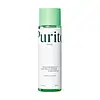What's inside
What's inside
 Key Ingredients
Key Ingredients

 Benefits
Benefits

 Concerns
Concerns

No concerns
 Ingredients Side-by-side
Ingredients Side-by-side

Water
Skin ConditioningShea Butter Ethyl Esters
EmollientPropanediol
SolventSerine
MaskingPolyglyceryl-6 Stearate
EmollientEctoin
Skin ConditioningSodium Polyglutamate
HumectantPentylene Glycol
Skin ConditioningCetearyl Alcohol
EmollientGlyceryl Stearate
EmollientArginine
MaskingBeta-Glucan
Skin ConditioningLysine Hcl
Skin ConditioningPolyglyceryl-6 Behenate
Emulsion StabilisingLactobacillus Ferment
Skin ConditioningGluconolactone
Skin ConditioningInulin
Skin ConditioningPotassium Cetyl Phosphate
EmulsifyingDextrin Palmitate
EmulsifyingCellulose
AbsorbentFructose
HumectantGlucose
HumectantCaprylic/Capric Triglyceride
MaskingDicaprylyl Carbonate
EmollientDiisostearyl Malate
EmollientCellulose Gum
Emulsion StabilisingXanthan Gum
EmulsifyingLactic Acid
BufferingCalcium Gluconate
HumectantSodium Benzoate
MaskingHydroxyacetophenone
AntioxidantWater, Shea Butter Ethyl Esters, Propanediol, Serine, Polyglyceryl-6 Stearate, Ectoin, Sodium Polyglutamate, Pentylene Glycol, Cetearyl Alcohol, Glyceryl Stearate, Arginine, Beta-Glucan, Lysine Hcl, Polyglyceryl-6 Behenate, Lactobacillus Ferment, Gluconolactone, Inulin, Potassium Cetyl Phosphate, Dextrin Palmitate, Cellulose, Fructose, Glucose, Caprylic/Capric Triglyceride, Dicaprylyl Carbonate, Diisostearyl Malate, Cellulose Gum, Xanthan Gum, Lactic Acid, Calcium Gluconate, Sodium Benzoate, Hydroxyacetophenone
Water
Skin ConditioningButylene Glycol
HumectantPentylene Glycol
Skin ConditioningDipropylene Glycol
Humectant1,2-Hexanediol
Skin ConditioningCentella Asiatica Extract
CleansingSodium Hyaluronate
HumectantPanthenol
Skin ConditioningMadecassoside
AntioxidantAsiaticoside
AntioxidantMadecassic Acid
Skin ConditioningAsiatic Acid
Skin ConditioningTrehalose
HumectantCarbomer
Emulsion StabilisingAllantoin
Skin ConditioningArginine
MaskingEthylhexylglycerin
Skin ConditioningDisodium EDTA
Portulaca Oleracea Extract
Skin Conditioning
 Reviews
Reviews

Ingredients Explained
These ingredients are found in both products.
Ingredients higher up in an ingredient list are typically present in a larger amount.
Arginine is an amino acid that is important for human development. Your body uses is it to produce hair keratin and skin collagen.
As a cosmetic ingredient, Arginine has antioxidant properties and can also help repair damaged skin. This ingredient is derived either synthetically or from animals.
Arginine isn't fungal acne safe when used in the presence of other lipids (fats, fatty acids, oils, esters, etc). Oils and fats occur naturally within the skin, so take caution when using Arginine if you're prone to fungal acne.
Learn more about ArgininePentylene glycol is typically used within a product to thicken it. It also adds a smooth, soft, and moisturizing feel to the product. It is naturally found in plants such as sugar beets.
The hydrophilic trait of Pentylene Glycol makes it a humectant. As a humectant, Pentylene Glycol helps draw moisture from the air to your skin. This can help keep your skin hydrated.
This property also makes Pentylene Glycol a great texture enhancer. It can also help thicken or stabilize a product.
Pentylene Glycol also acts as a mild preservative and helps to keep a product microbe-free.
Some people may experience mild eye and skin irritation from Pentylene Glycol. We always recommend speaking with a professional about using this ingredient in your routine.
Pentylene Glycol has a low molecular weight and is part of the 1,2-glycol family.
Learn more about Pentylene GlycolWater. It's the most common cosmetic ingredient of all. You'll usually see it at the top of ingredient lists, meaning that it makes up the largest part of the product.
So why is it so popular? Water most often acts as a solvent - this means that it helps dissolve other ingredients into the formulation.
You'll also recognize water as that liquid we all need to stay alive. If you see this, drink a glass of water. Stay hydrated!
Learn more about Water